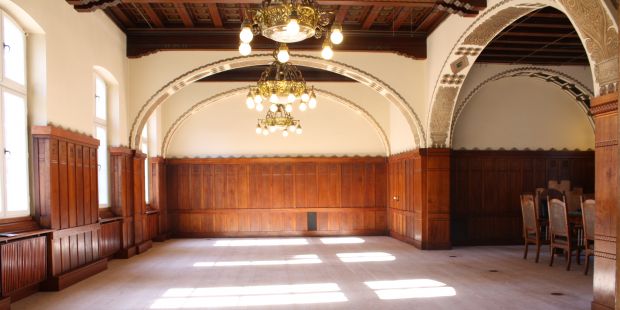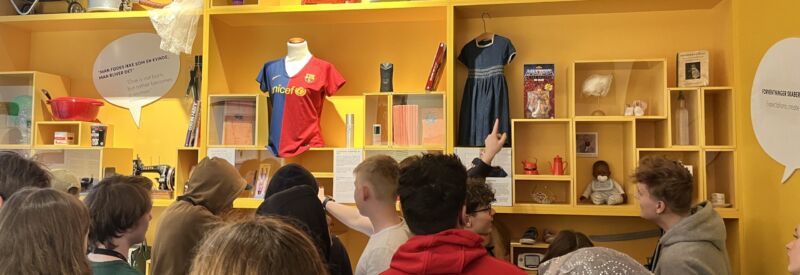About KØN – Gender Museum Denmark
KØN – Gender Museum Denmark is a Danish museum located in the middle of Aarhus. It is one of the few museums in the world, focusing on gender and equality.
The vision of the museum is to inspire curiosity, dialogue, reflection, and knowledge about the importance of gender; past, present, and future. KØN – Gender Museum Denmark portrays the cultural history of gender in a broader perspective, involving all the colours of the rainbow. Spread across 3½ floors, the museum invites you to visit 1200 m2 of exhibitions and a café. The average visit to the museum takes 1-2 hours, not including a visit to the café.
The history of the museum
KØN originated from a grass root movement: a museum society named Kvindemuseet (The Women’s Museum). The society was founded at a general meeting on 31st October 1982, with the dual purpose of building a women’s museum, and creating employment for women. In 1991, the museum received state recognition as a national specialist museum, responsible for portraying women’s cultural history in recent time.
As a natural consequence of this change in responsibility, the museum changed its name from Women’s Museum to KØN – Gender Museum Denmark in February 2021. Being an active and modern museum institution, the museum works to involve the guest directly in the exhibitions by creating curiosity, dialogue, reflection, and knowledge about the importance of gender – past, present, and future.

The building
Since 1984, the museum has been situated in a building originally built as the town hall in 1857, long before women got the right to vote. In 1879, a jail was added and the building was both city hall and police station, until the present city hall was complete in 1941.
The same year, the police took over the entire building and it remained a police station until 1984, when the museum moved in and started building up collections, planning research and designing exhibitions.
In the early 1990s, the Mathilde Fibiger Garden was laid out as a public space next to the museum. In the garden, the museum is hosting different events and during the summer the food from the café can be enjoyed at the small tables in the cosy garden. In 2005, the museum expanded into the side building, which was originally built as a jail house.
The museum tells the story of democracy and highlights the building’s old city hall as the largest and most significant museum object. It tells storys of women’s way to democracy and power, with equal opportunity and diversity within gender as a perspective for the future.
Vision, mission and area of responsibility
Vision
KØN – Gender Museum Denmark wants to be the leading creator of dialogue on the importance of gender and create insight, as well as engage and strengthen the will to an equal society.
With the experience as a center, the museum creates curiosity, dialogue, reflection, and knowledge about the importance of gender – past, present, and future.
Mission
The museum’s area of responsibility is the cultural history of gender. With a starting point in women’s history, the focus areas of the museum are gender culture past and present, including changes in the gender conditions and relations over time as well as diversity in life terms across areas as gender, sexual orientation, androgynity and ethnicity. The geographical area of responsibility is national.
Area of responsibility
Timewise, the area of responsibility is middle age to present day. With a starting point in the area of responsibility, the museum must secure cultural heritage in Denmark and develop the understanding and meaning of this, nationally as well as internationally.
In May 2016, The Agency for Culture and Palaces recognized that KØN – Gender Museum Denmark (then Kvindemuseet i Danmark – The Women’s Museum in Denmark) expanded their area of responsibility. The museum was founded in 1982, when women’s culture and history was strongly overlooked. During the past decades, the museum has collected important documentation of women’s everyday lives as well as women’s active contribution to the development of society.
Much has changed in the world of gender perception since the Women’s Museum Society saw the light of day; also men’s role and function has changed significantly. In some areas, the cultural heritage still rests upon the old-fashioned division between gender and roles, whilst the present expects a more open display of all genders.









